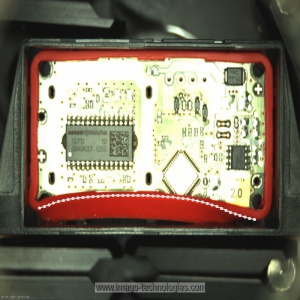You are here: Start » AVL.NET » AVL.ImageAlongPath(AvlNet.Image, AvlNet.Path, AvlNet.CoordinateSystem2D?, int, AvlNet.Axis, AvlNet.InterpolationMethod, AvlNet.Image, AvlNet.Path, AvlNet.Path[])
AVL.ImageAlongPath(AvlNet.Image, AvlNet.Path, AvlNet.CoordinateSystem2D?, int, AvlNet.Axis, AvlNet.InterpolationMethod, AvlNet.Image, AvlNet.Path, AvlNet.Path[])
| Namespace: | AvlNet |
|---|---|
| Assembly: | AVL.NET.dll |
Syntax
public static void ImageAlongPath( AvlNet.Image inImage, AvlNet.Path inAxisPath, AvlNet.CoordinateSystem2D? inAxisPathAlignment, int inScanWidth, AvlNet.Axis inAxisType, AvlNet.InterpolationMethod inInterpolationMethod, out AvlNet.Image outImage, out AvlNet.Path outAlignedAxisPath, out AvlNet.Path[] diagSamplingPoints )
Parameters
- inImage
- Type: AvlNet.Image
- inAxisPath
- Type: AvlNet.Path
- inAxisPathAlignment
- Type: System.Nullable<AvlNet.CoordinateSystem2D>
- inScanWidth
- Type: System.Int32
- inAxisType
- Type: AvlNet.Axis
- inInterpolationMethod
- Type: AvlNet.InterpolationMethod
- outImage
- Type: AvlNet.Image
- outAlignedAxisPath
- Type: AvlNet.Path
- diagSamplingPoints
- Type: AvlNet.Path
Description
The operation transforms the stripe of pixels of width inScanWidth along the inAxisPath in the way that transforms the path into straight segment. Two modes of pixel interpolation are available, the bilinear filtering being more precise and computationally expensive.
The optional parameter inAxisPathAlignment defines the transform to be performed on the inAxisPath so that the resulting path is defined in a new context, e.g. returned by one of Template Matching filters.
Examples
 |
 |
ImageAlongPath performed on the sample image with inScanWidth = 50 and inAxisType = Y. The result was transposed using TransposeImage for clarity.


